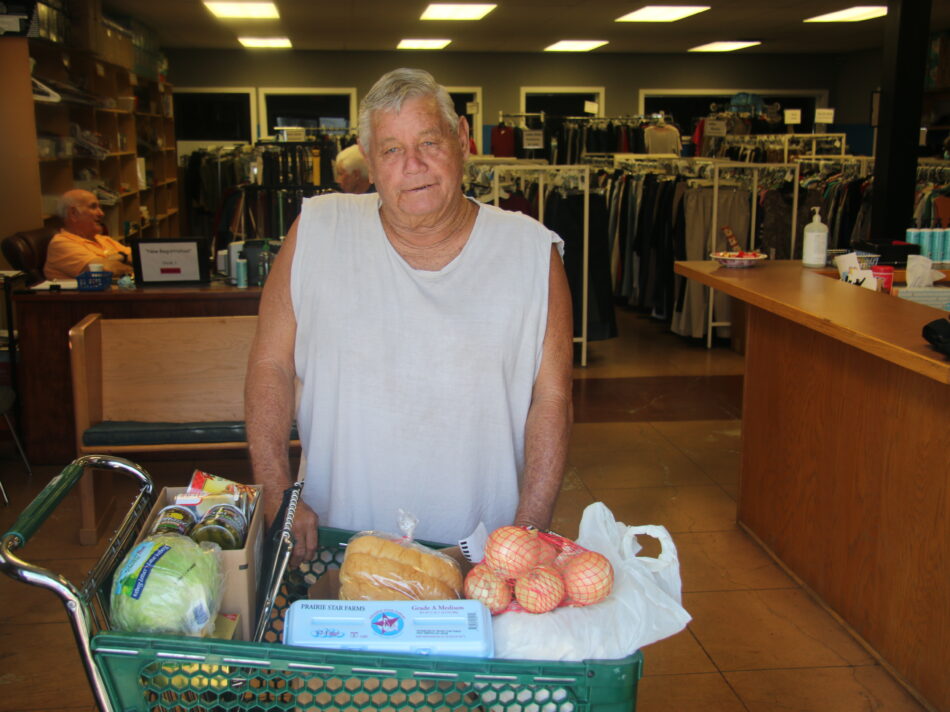
In July 2024, Feeding America released its most recent data analyzing food insecurity among seniors (adults aged 60 and older) and older adults (aged 50-59) both nationally and on a state level. For the United States as a whole, food insecurity rose substantially. For Kansas and Missouri, the numbers were mixed.
The report, which reflects data collected in 2022, shows senior hunger in Kansas climbed to 5.9% (1 in 17) from 4.6% (1 in 22) the previous year. In Missouri, that number dropped very slightly, landing at 7.8% in 2022 down from 7.9% in 2021 (about 1 in 13 both years).
Food insecurity for older adults in Kansas fell to 4.9% (1 in 20) in 2022 from 7.9% (1 in 13) in 2021. In Missouri, it fell to 8.2 (1 in 12) from 12.6% (1 in 8) the previous year.
Some key insights for particular subsets of the senior and older adult population show nationally, seniors with a disability had food insecurity rates over twice the rate of seniors without a disability (15.3% and 6.5%, respectively). Older adults with a disability had rates that were over three times higher than those without a disability (31.2% and 9.3%).
Seniors and older adults who have a grandchild in the household experience food insecurity at higher rates than those without that caretaker duty. In 2022, food insecurity was 2.2 times as high for seniors residing with a grandchild (18.1% vs. 8.3%) and 2.3 times as high for older adults residing with a grandchild (25.6% vs. 11.3%).
In households with limited economic resources, children are often shielded from food insecurity by their caregivers. Seniors and older adults may ensure the food security of their grandchildren at the expense of their own dietary needs as they deal with the stress of caregiving responsibilities and stretch already-limited financial resources.
Across the age spectrum, many communities of color experience food insecurity at disproportionate rates due to the continued impact of systemic racism and discrimination. Seniors and older adults are no exception.
In 2022, food insecurity among Black, non-Hispanic seniors (17.2%) and Latino seniors (17.6%) was more than 2.7 times as high as for white, non-Hispanic seniors (6.3%). Food insecurity among Black, non-Hispanic older adults (19.5%) and Latino older adults (19.0%) was more than two times as high as for white, non-Hispanic older adults (9.3%).
Given these findings and the fact that inflation has continued to climb in the two years since this study was conducted, Feeding America has some recommendations to protect seniors and older adults going forward.
The organization recommends simplifying and improving access to the Supplemental Nutritional Access Program (SNAP) and other grocery and commodity programs, including The Emergency Food Assistance Program (TEFAP) and the Commodity Supplemental Food Program (CSFP). Our neighbors depend on such programs to afford the basic necessities to feed themselves and their families, but it can be a complicated process to apply to receive benefits, turning away some that would qualify.
Feeding America also acknowledges the impact that high housing costs have on food insecurity, and stresses that it is critical for investments be made in policies that will provide more affordable housing in communities, additional housing aid and oversight programs for landlords.
Harvesters remains committed to serving seniors and older adults in our service area who are experiencing food insecurity. Click here to learn about some of the ways we are currently working to serve this often-overlooked population.